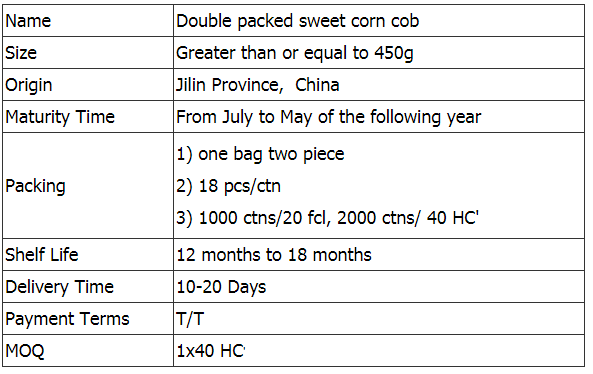The new cultivation technology of zucchini
The zucchini, also known as the hairy melon, is a variant of the gourd, belonging to the cucurbitaceae. China has a long history of cultivation in Guangdong and Guangxi. With less planting in the north, in order to adjust the planting structure, increase economic efficiency and enrich the supply varieties, the Munch Garden Institute in Shuangta District, Chaoyang City, was introduced into the cultivation experiment from 2001 to 2002, and achieved success. Sunlight greenhouse planting 130 square meters, income 2870 yuan. After deducting the cost of 600 yuan, net income of 2270 yuan, 667 square meters of net income of 11,350 yuan. The specific cultivation techniques are as follows.
I. Variety selection
Selection of high-quality, high-yield, disease-resistant insects, strong stress resistance, wide adaptability, and good commercial quality of Guangzhou seven-star Zaigua. This melon is oblong, 15-20 cm long, about 10 cm in diameter, and dark green.
Second, nursery
The use of nutritional seedlings nursery, before the Spring Festival on January 27th seedlings. Seeds were first soaked in hot water at 55°C for 20 minutes, while stirring while soaking, and then soaked in clean water at 30°C for about 20 hours. The seeds were removed when the seeds were not dried. When the seed buds grow to the equivalent of 1/3 of the seeds, they are sown in a nutrient bowl and cultivated in a greenhouse.
Third, colonization
1. Prepare soil fertilization before planting and apply 3,500 kg of farmyard fertilizer per 667 square meters. Basal fertilizer is mainly spreader, and it is done by one meter of one-line land. Before the planting, the greenhouses were disinfected and mixed with 30% dichlorvos emulsifiable concentrate mixed with sawdust and sulphur powder, and were ignited in 3 places, sealed for 1 day and night, and planted after being tasteless.
2. The planting time and methods were planted on March 1st, and the plant spacing was 20 cm. The single row spacing was 1 meter. The average 667 square meters was planted with 3300-3400 strains. The gingival sulcus was stably settled and buckled.
IV. Management after planting
1. Management of fertilizer and water-saving guarana Water is poured 16 times in the whole growth cycle, including 6 times in the early stage of growth and 10 times in the middle and late stages of growth. When flowering, the first melon walnut is poured with small water, under the film, under irrigation, and water is poured. Pour water once every 3-4 days after squashing and avoid watering in the cloudy evening. In the early stage of growth, topdressing 15 kg of urea, 15 kg of diammonium phosphate, 5 kg of potassium sulfate, 1,000 kg of chicken manure, etc., are applied twice to supplement the growth requirements of each growth period.
2, increase the use of good light transmission film, winter and spring to keep the film surface clean, in order to increase light intensity.
3. Control indoor temperature and humidity According to the requirements of temperature and humidity in different growth stages of the zucchini, production measures such as ground cover, under-membrane under-irrigation, ventilation and humidity control, and temperature control shall be adopted to control the temperature and humidity in the shed within a suitable range. Inside. The temperature is generally controlled at 15°C-30°C.
4. Pest control The principle of prevention and control based on agricultural measures is mainly adhered to and the principle of chemical control is supplemented. Highly toxic and high residue pesticides are not used. The main insect pests are whitefly, which is sprayed with chlorfenazin and locusts for a net prevention and control. Botrytis cinerea can be sprayed to prevent and control mildew. After 1 month of colonization, the spray was sprayed on the average every 7 days for a total of 5 sprayings.
V. Reasonable harvesting
The zucchini began harvesting on May 17 and pulled it on June 19. A total of 130 square meters of 2009 kg will be harvested, and 10045 kg will be produced at a rate of 667 square meters. The weight will be 400-500 grams. Batch harvested in a timely manner to reduce the burden on the plant to ensure product quality, and promote fruit enlargement in the later period.
Disclaimer: Some articles in this website have been transferred from the Internet. If you are involved in third party legal rights, please inform this website. phone
A medium-sized cob of corn provides more than 10% of our daily dietary fibre requirements.
There are two types of dietary fibre - soluble and insoluble - and sweet corn contains both.
According to the American Heart Association, dietary fibre as part of an overall healthy diet can help lower blood cholesterol levels and may reduce the risk of heart disease. It is insoluble fibre that binds to cholesterol, preventing it from being absorbed into the bloodstream.
Insoluble fibre is responsible for promoting regularity and helping to prevent constipation by speeding up the passage of food and waste through the intestines and absorbing water to keep stools soft. Insoluble fibre has been shown to reduce the risk of haemorrhoids.
Fibre-containing foods such as sweetcorn also help to provide a sense of satiety and may therefore help to suppress appetite and aid weight management.
Dietary fibre has also been linked to a reduced risk of type 2 diabetes. A diet rich in fibre helps patients manage their disease.
Fibre is fermented by bacteria in the colon. Promising studies are underway to determine the health-promoting effects of fibre fermentation breakdown products, for example, short-chain fatty acids, which may help to maintain a healthy gut.


Yellow Sweet Corn,Double Packed Sweet Corn,Double Packed Sweet Corn Cob,Double Packed Yellow Sweet Corn
Jilin Province Argricultural Sister-in-law Food Co., Ltd. , https://www.nscorn.com